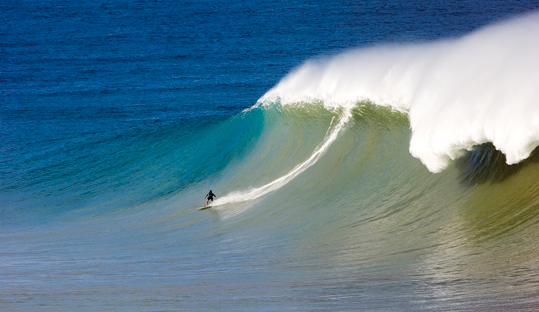Stormrider Guide to surfing Northwest Puerto Rico
Puerto Rico, CENTRAL AMERICA & CARIBBEAN
|
 Tres Palmas, Steve Fitzpatrick
Tres Palmas, Steve Fitzpatrick
|
Summary
|
+ Consistently offshore
|
- Windy
|
|
+ Quality pointbreaks
|
- Heavy crowds and locals
|
|
+ Warm, powerful waves
|
- Car crime
|
|
+ Easy access
|
- Pollution and sewage problems
|
|
|
For 40 years the surfing world has been well aware of the quality that resides on Northwest Puerto Rico and names like Gas Chambers and Tres Palmas have become synonymous with challenging, Hawaiian-style surf in the heart of the generally small surf Caribbean. Judiciously aided by the second deepest ocean trench, just offshore, PR sucks in the lionÕs share of winter ground and summer windswells to all its littoral extent.
When to Go
US East Coast cold fronts send NW-NE 2-15ft swells down to the most consistent NW tip of the island. The swells wrap onto the W coast giving clean, offshore conditions. NE, E and SE windswells, plus occasional hurricanes in the Caribbean will produce waves in other parts of the island. The wind blows predominantly from the E, veering NE in the winter and SE in the summer. Tidal ranges are minimal (0.72m), but affect many of the shallow reefs.
Surf Spots
Statistics |
J
|
F
|
M
|
A
|
M
|
J
|
J
|
A
|
S
|
O
|
N
|
D
|
| dominant swell |
N -NE |
N -NE |
N -NE |
N -NE |
N -NE |
N -NE |
| swell size (ft) |
4-5 |
3-4 |
2 |
1-2 |
4 |
4-5 |
| consistency (%) |
80 |
65 |
40 |
30 |
70 |
80 |
| dominant wind |
NE -SE |
NE -SE |
E -SE |
E -SE |
E -SE |
NE -SE |
| average force |
F4 |
F4 |
F4 |
F4 |
F4 |
F4 |
| consistency (%) |
79 |
76 |
83 |
96 |
90 |
78 |
| water temp (C) |
25 |
26 |
27 |
28 |
28 |
26 |
| wetsuit |
boardshorts |
boardshorts |
boardshorts |
boardshorts |
boardshorts |
boardshorts |
|
Travel Information
Weather
Winter highs of around 24¡C (75¼F) and night-time lows that never drop under 15¡C (58¼F) at the coast, where there is no distinct wet and dry season. High rainfall in the mountains and in Sept-Oct, when strong hurricanes occasionally hit the island. Mainly boardshorts or a shorty for early, windy, late winter sessions.
|
Lodging and Food
The surf and tourist season are concurrent, meaning higher prices, but PR is lower on the Caribbean scale. Quality accommodation options include La Cima in Isabella, ($60/d), Cielo Mar in Aguadilla, ($55/d), or Surf & Board Surfari in Rinc—n, ($45/sgle/d). A good meal can be had for $15.
|
Nature and Culture
Great windsurfing and diving. San Juan is the second oldest city in the Americas - check the historic old town and El Morro. ThereÕs good hiking in the El Yunque rainforest national park. The nightlife is very lively.
|
|
